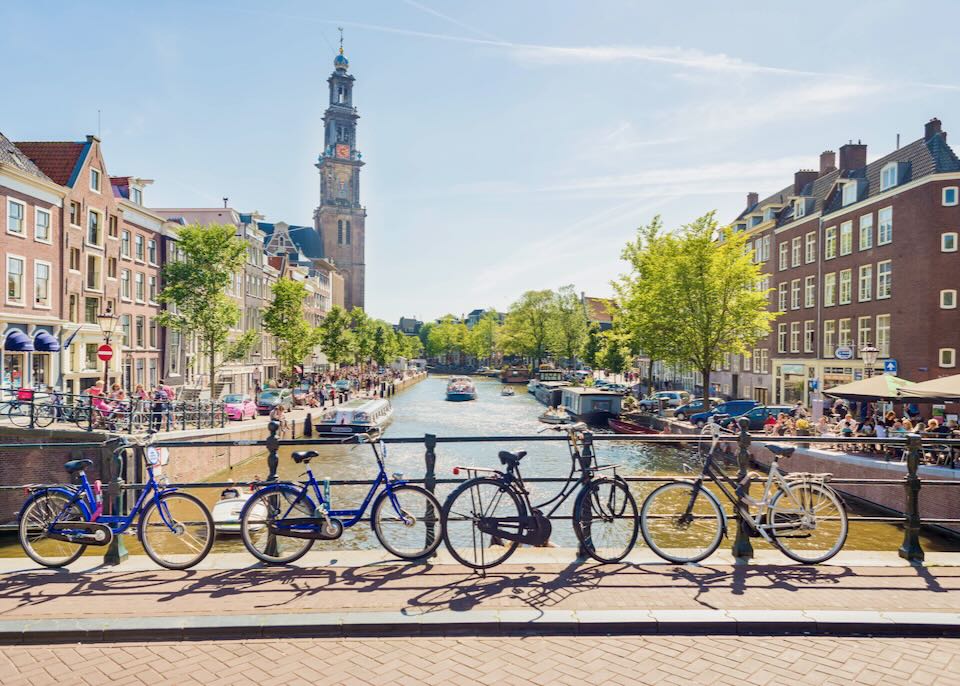
View over the Prinsengracht Canal, with Westerkerk Tower in the background.
Called the Venice of the North, picturesque Amsterdam is centered around an intricate lacework of canals and bridges, lined with narrow townhouses and houseboats. With its mix of medieval and contemporary architecture, rich art collections, kid-friendly museums and activities, green parks and tulip gardens, and roaring nightlife, Amsterdam is a crowdpleasing choice for any type of traveler. The city is most beautiful in spring, while summer offers the best weather, and winter sees the best rates and fewest tourists.
The Amsterdam Travel Guide
- Skip to our Amsterdam FAQ
Amsterdam Basics
Amsterdam Hotels
- Best Hotels in Amsterdam
- Best Hotels in Amsterdam for Families
- Best Cheap Hotels in Amsterdam
- Best Boutique Hotels in Amsterdam
- Amsterdam Airport Hotels
- Amsterdam Hotel Map
Amsterdam Activities
- Best Amsterdam Tours & Things to Do
- Amsterdam with Kids
- Best Restaurants in Amsterdam
- Best Amsterdam Bars, Breweries, & Tasting Rooms
- Best Amsterdam Shops & Markets
Latest Articles & My Travel Newsletter
Frequently Asked Questions about Amsterdam
Where is Amsterdam?
Amsterdam is located in the western Netherlands, in the province of North Holland near the North Sea. Although most major government buildings are found in the Hague (located about 60 km southwest of Amsterdam in South Holland province), Amsterdam is the Netherlands ‘ capital city. Amsterdam is well-connected by train to London (with ferry), Paris, Frankfurt, Berlin, Brussels, Bruges, Munich, and more. Amsterdam has a land area of 219 sq km, and a metro-area population of 1,149,000.
When is the best time to visit Amsterdam?
The best months of the year to go to Amsterdam are in the shoulder seasons: April, May, early June, mid to late-September, and early October. Though the weather in Amsterdam is best during the high summer months (with sunnier skies and high temps hovering around 20°C), this period sees thick crowds of travelers, long lines at museums and tourist attractions, and higher airline and hotel rates.
The most beautiful time to visit Amsterdam is during spring, when entire fields bloom with colorful tulips. Though tulip season is weather-dependent, it generally extends between late March and mid-May. The middle of April typically brings the most prolific blossoms, making it an ideal time to visit Amsterdam to see the tulip fields at their showiest and most colorful.
Keukenhof Gardens in April
Travelers looking for shopping discounts in Amsterdam should visit in January and July. Like in other major European cities, retailers in Amsterdam limit their discount sales to twice a year, when stores offer dramatic savings as they clear out their inventory. Because they take place amid high season, July sales are more crowded and competitive than those in January, but during either month, expect to find a greater choice of goods toward the beginning of the period but bigger discounts toward the end.
The low travel season in Amsterdam is November through February, aside from Christmas. The weather may be dismally gray and cool, but this can still be a great time to visit. Hotel and airfare rates will be at their lowest, and museums and indoor attractions will be much less crowded – including Amsterdam’s top tourist attraction, the Anne Frank House. If you’re lucky, you may be treated to the magical sight of the city blanketed with fresh snow or ice skaters on the frozen canals.
What is Amsterdam known for?
Amsterdam is best known for its picturesque system of canals and bridges that connect and surround the city’s central core, and the bikes and barges that locals use to get around. The city is home to many world-class art museums that feature paintings by the Dutch Masters (Rembrandt, Vermeer, Hieronymus Bosch) and others – there’s an entire museum dedicated to the Dutch painter Vincent Van Gogh. While the region draws millions of visitors each spring to see its cheerful tulip fields in full bloom, Amsterdam also has a hedonistic side, with abundant breweries, cannabis and psychedelics sold in coffee and smart shops, and the provocative Red Light District featuring regular sex shows. The legacy of WWII looms large in the city, which was occupied by Nazi Germany from 1940-1945.
A tour boat passes barges in the Prinsengracht Canal.
Some of the best things to do in Amsterdam include taking a canal boat or bike tour, appreciating great works of art (if you only visit one museum, make it the Rijksmuseum), day trips to see the Kuekenhof tulip gardens and the Zaanse Schans windmills, and beer tasting and tours at the Heineken Experience. Amsterdam’s most famous attraction is the Anne Frank House, the home and hiding-place of the young diarist, now adjoined to a major museum dedicated to Amsterdam’s WWII German Occupation (definitely book tickets in advance).
What are the best areas to stay in Amsterdam?
Amsterdam is divided into five main boroughs: Centrum (in and around the City Center), Amsterdam-Noord (North Amsterdam), Amsterdam-Oost (East Amsterdam), Oud-Zuid (Old South), and Amsterdam-West. Each of these boroughs is subdivided further into neighborhoods, each with their own distinct vibe.

The best Amsterdam neighborhoods for first-timers to the city are the City Center, Western or Southern Canal Belt, or Oud-Zuid. All of these central neighborhoods are easily walkable to major attractions; City Center is where the action (and the anything-goes Red Light District) is, while the Canal Belts are a bit quieter and just as scenic. Oud-Zuid is a great location for those most interested in Amsterdam’s art museums.
The best neighborhoods in Amsterdam for families are Oud-Zuid and De Plantage. Both of these neighborhoods are tranquil and mostly residential, with good proximity to the City Center. Oud-Zuid has great museums and Amsterdam’s best park; De Plantage contains the ARTIS Royal Zoo.
The best Amsterdam neighborhood for a local feel is De Pijp, south of the Southern Canal Belt. Highly walkable and home to a host of boutique shops and Amsterdam’s largest street market, De Pijp has a multicultural population, an independent spirit, and an arty, bohemian vibe.
The Antiques Collector Suite in the boutique hotel Pulitzer, one of our favorite hotels in Amsterdam, located in the Western Canal Belt and overlooking the Prinsingracht Canal.
How long should I plan to spend in Amsterdam?
Most of Amsterdam’s must-see attractions (The Rijksmuseum, Anne Frank House, Van Gogh Museum, Dutch Resistance Museum, canal or bike tour) can be covered in 3 full days, though a 5-day trip will give you more time to explore the city’s diverse neighborhoods and the surrounding area. The best day trips from Amsterdam include the Keukenhof Gardens, Zaanse Schans windmills (both half day tours), the quaint canal town of Giethoorn, and Bruges in Brussels (full day). However long you stay, taking a guided tour is recommended to maximize your time and learn more about the city’s history and culture.
The historic windmills of Zaanse Schans make an easy half-day trip from Amsterdam.
How do I get around in Amsterdam?
Amsterdam is a compact city spanning just 24 km at its widest section from northwest to southeast, though the vast majority of the city’s best-loved landmarks, museums, and attractions lie within 4 km from the City Center. With everything so close together, most people get around on foot or by bike. Cycling is the most authentic mode of transportation in Amsterdam, which boasts over 500 km of dedicated bike paths and ranks as the second most bike-friendly city in the world, just after Copenhagen. Additionally, the city boasts a robust public transportation system operating 24 hours a day with trams, trains, ferries, and buses seamlessly linking each neighborhood. Single-use tickets are good for one hour, and passes offering unlimited rides can be bought for 1 to 7 days. Ferries connecting Amsterdam-Noord to the City Center are free for passengers on foot or bike. Taxis are easiest to find at designated taxi stands or by calling ahead; all taxis are metered. Uber operates here, too. Renting a car is unnecessary and inconvenient for trips around town; even for more distant towns, it’s recommended to take the train.
Cyclists wait to board the ferry in Jordaan.
What is the Red Light District?
Amsterdam actually has few small red-light districts, areas where the famously liberal city designates space for prostitution, sex shows, marijuana sales and consumption, and other hedonistic activities. The largest and best-known is De Wallen, located in the attractive, cobblestone streets of the medieval City Center. Traditional Dutch window prostitution is the most common form of sex work here; about 300 windows with attached single rooms are rented out by scantily clad women advertising their services. Brothels, strip clubs, sex shows, peep shows, and sex shops line the canalside streets, interspersed with Amsterdam’s famous coffee shops where buying and smoking marijuana (though not strictly legal) is tolerated, smart shops offering psychedelic mushrooms (also not 100% legal but still tolerated), museums devoted to the history of sex and prostitution, rowdy tourist bars, and brown cafés (classic Dutch pubs).
Aside from id-oriented attractions, the Red Light District is home to the city’s oldest building, the Oude Kerk (Old Church) dating back to 1213, and the city’s narrowest street, Trompettersteeg, only 100 cm wide. Though it may feel like anything goes in the Red Light District, be advised that drinking is not allowed on the streets, only inside the bars and on their terraces. Weed is tolerated for amounts under 5 grams, any more than that (or any amount of hard drugs at all) is a punishable offense. Likewise, taking photos or videos of sex workers in their windows is not allowed. Be calm, be cool, be respectful, and everyone will have a good time. Despite its seedy appearance, the Red Light District is generally considered a safe area in Amsterdam. Police patrol the streets regularly; the most common crime here is pickpocketing.
Named for the red neon lighting up the windows of sex workers, the Red Light District is much safer than it appears, despite its reputation as Europe’s adult playground.
Is Amsterdam safe?
Year after year, Amsterdam is consistently ranked as one of the 10 safest cities in the world according to The Economist‘s “Safe Cities Index.” Aside from pickpocketing in busy areas where people are easily distracted (like the Red Light District or train stations), the main criminal elements center on bike theft, illegal street drugs, and inebriated tourists. Violent crime is almost unheard of in any part of the city. Most streets are well lit at night; bars, clubs, and cafés stay open until 3:00am or later, keeping the streets busy.
Historic Dam Square is always bustling – chock full of trendy bars, stylish hotels, and historic sights, including the Royal Palace and Nieuwe Kerk (New Church).
What currency is used in Amsterdam?
As the Netherlands are part of the European Union, the currency used in Amsterdam is the euro (€). Most shops and restaurants in Amsterdam accept credit cards, but it’s always a good idea to have some cash on hand for small purchases and tram fare. ATMs are easily located across Amsterdam, but note that these are usually stand-alone machines owned by banks but unconnected to an actual bank building (there are few banks in Central Amsterdam). The most common and trusted Dutch banks with ATMs in Amsterdam are ABN, ING, and Rabobank.
ATMs are common in Amsterdam, but it’s good to have some cash on hand for small purchases, like a few colorful tulips from the Bloemenmarkt.
Tipping in Amsterdam is not always customary, but will always be appreciated – just don’t feel the need to tip too much. For most restaurant service, it’s enough to round up the bill or leave change on the table; for above-and-beyond restaurant service, tip 5-10% of your bill directly to your waiter. At an Amsterdam bar, round up the bill as you handle the tab at the end of the evening, or leave a few coins in the tip jar at the bar after each order. As a thanks for great service, tip your Amsterdam taxi driver by rounding up the fare to the nearest euro. There’s no need to tip at Amsterdam hotels, except as an added thank you for exceptional service, and then only a euro or two.
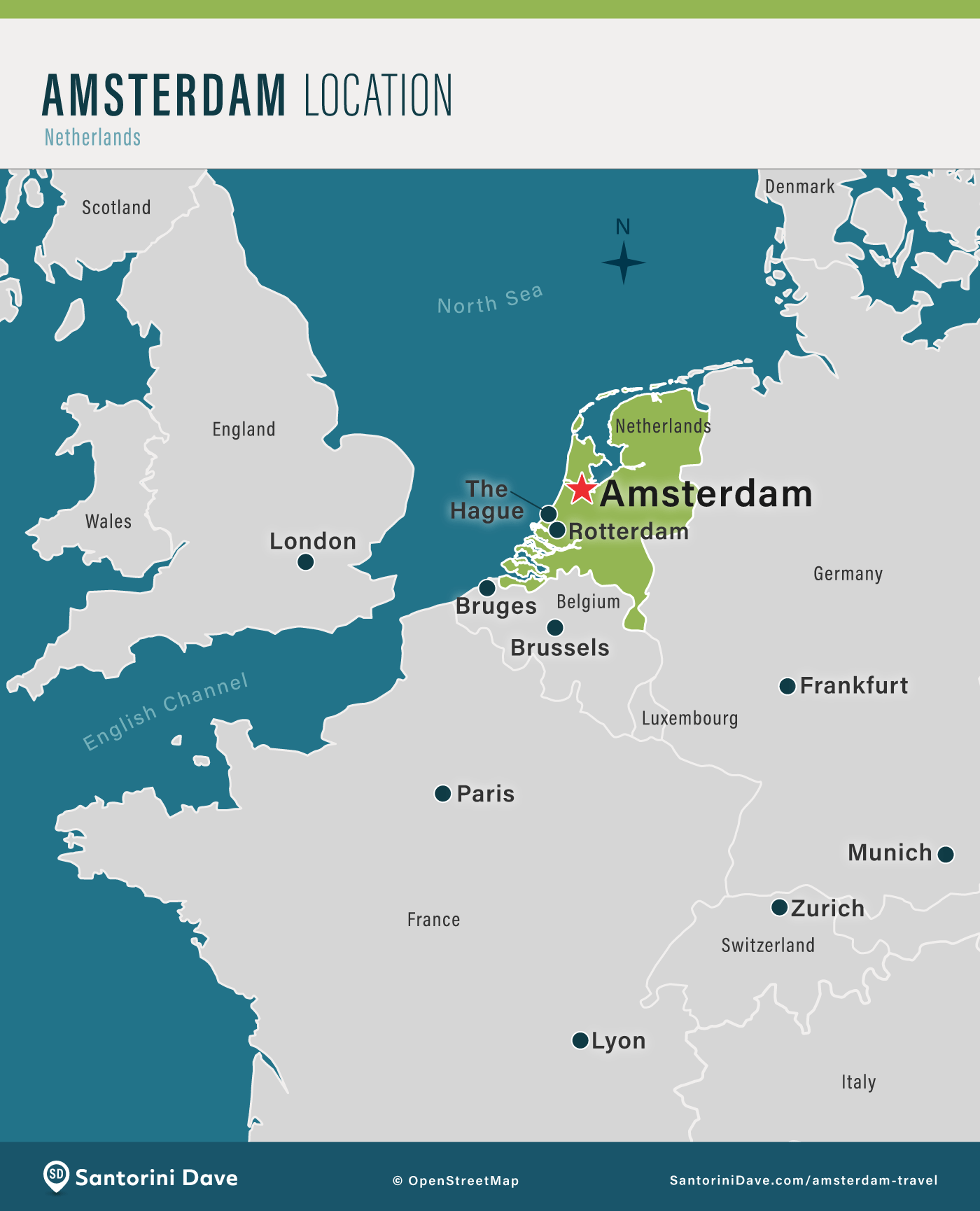
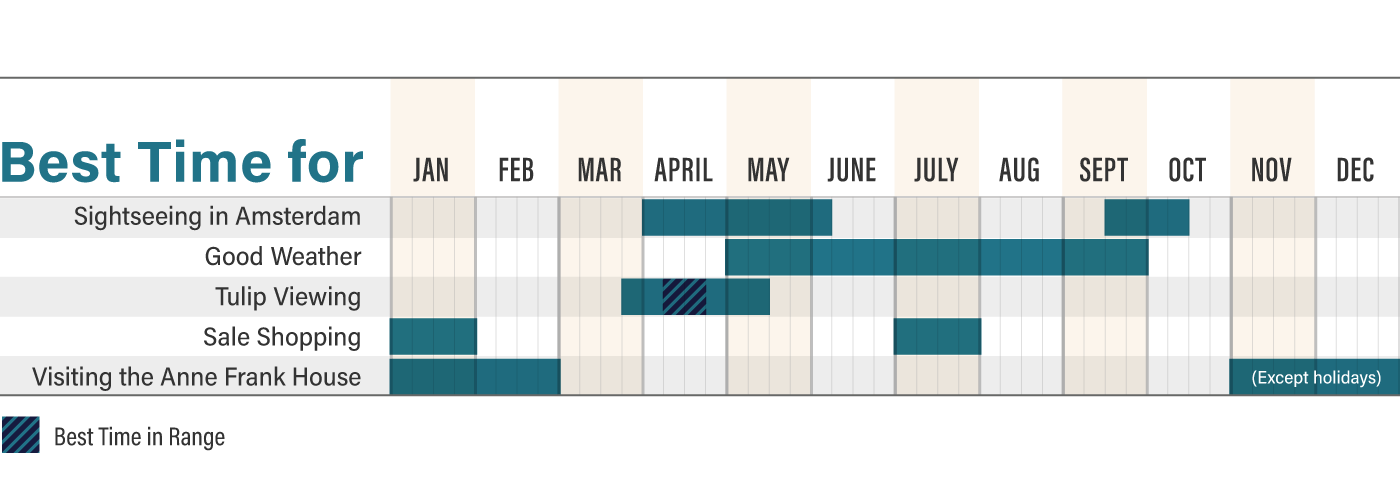

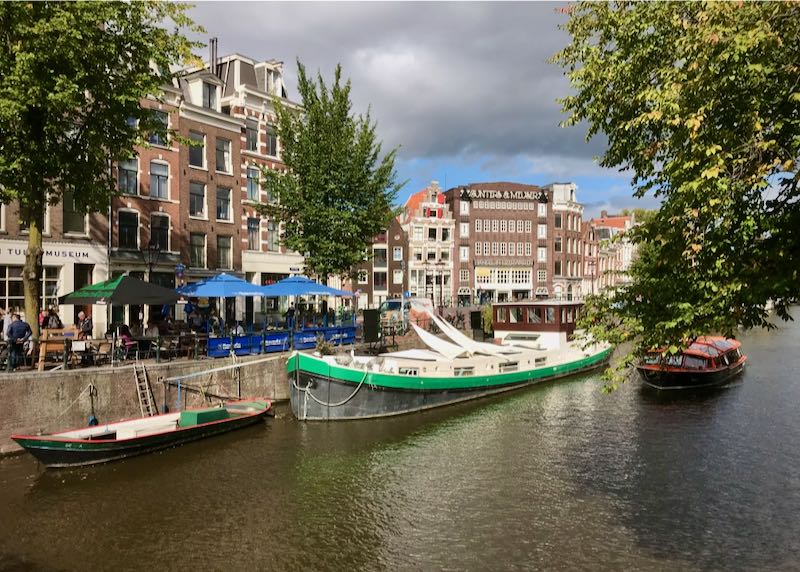
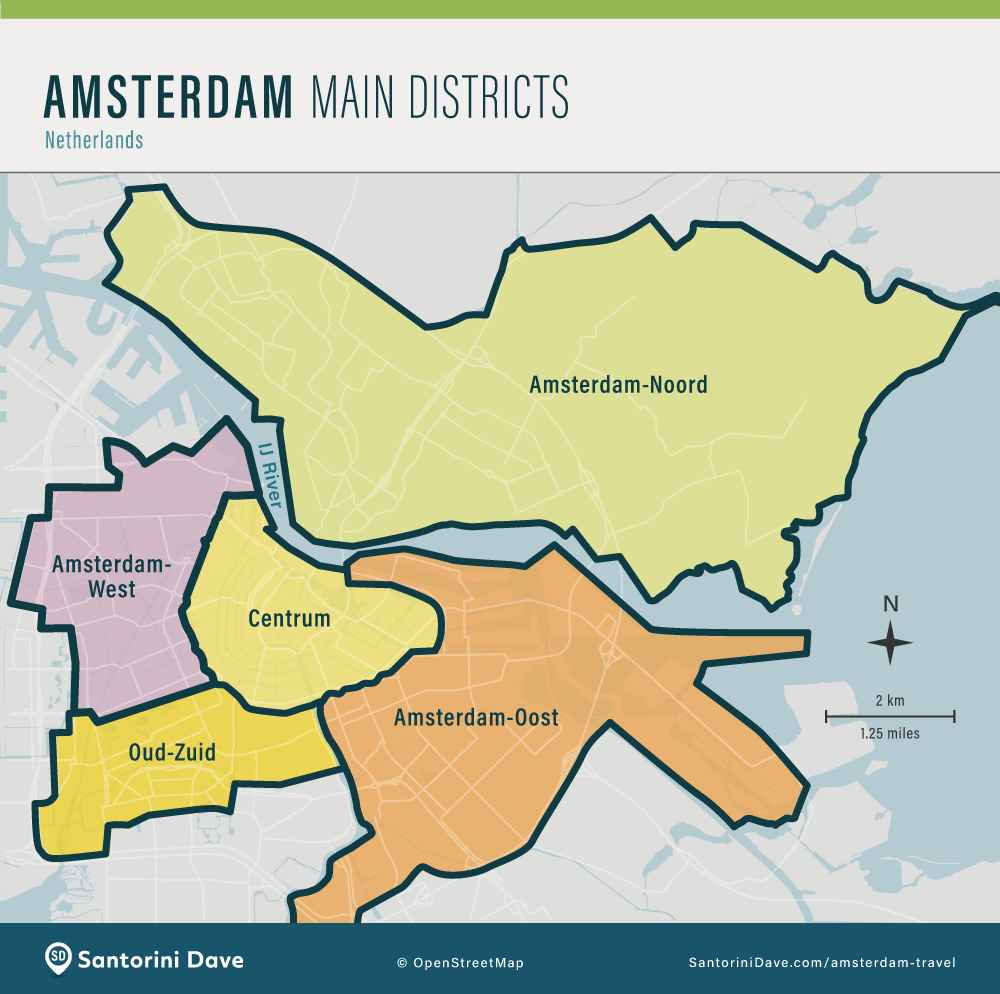
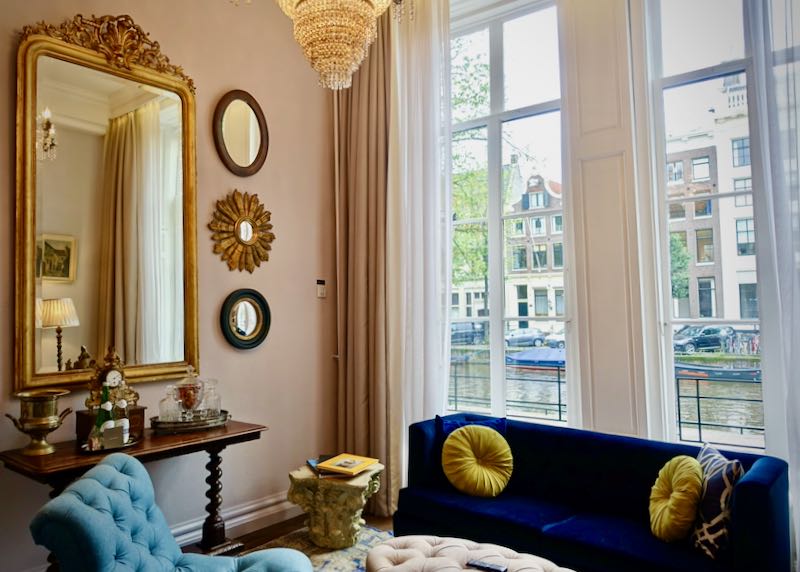
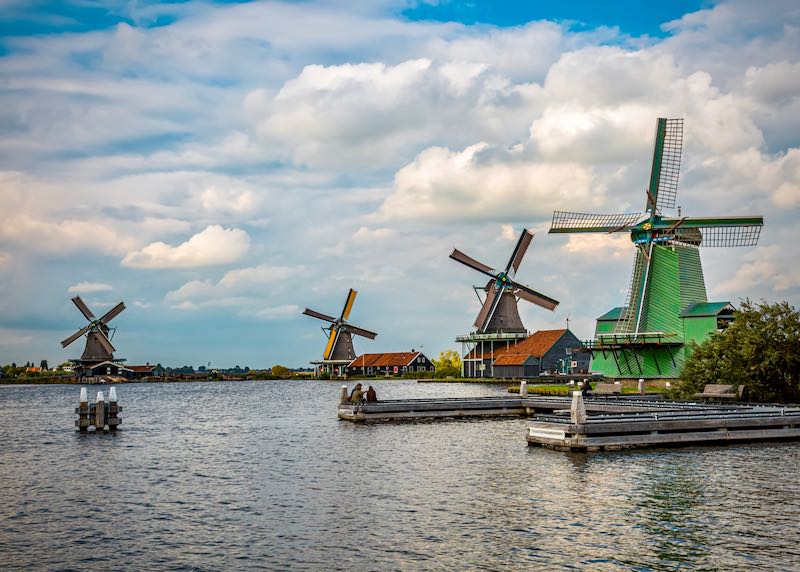
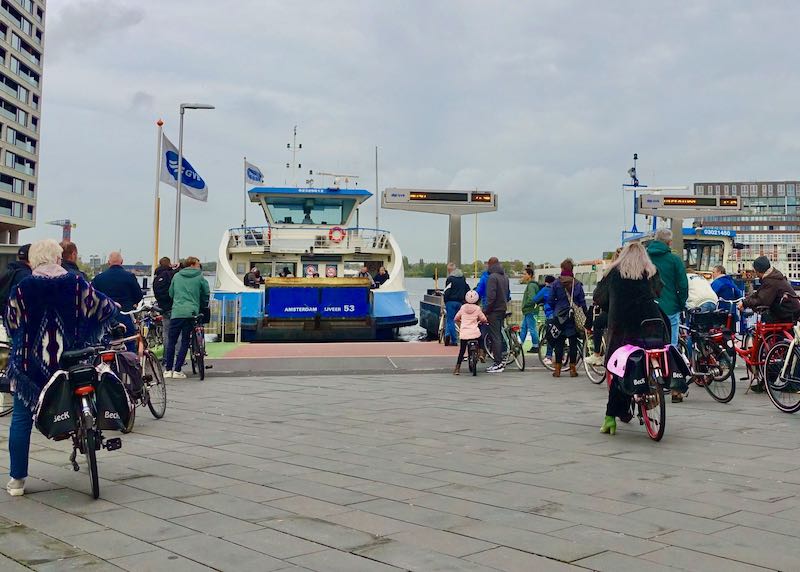
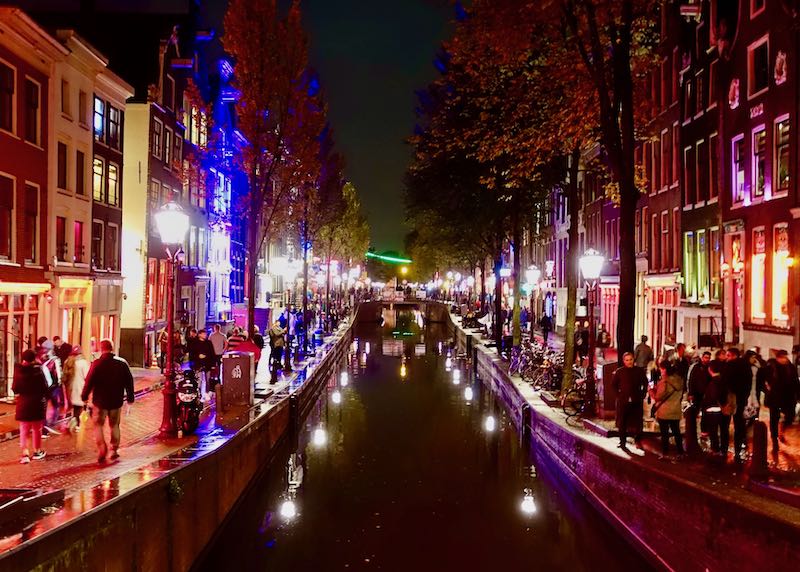
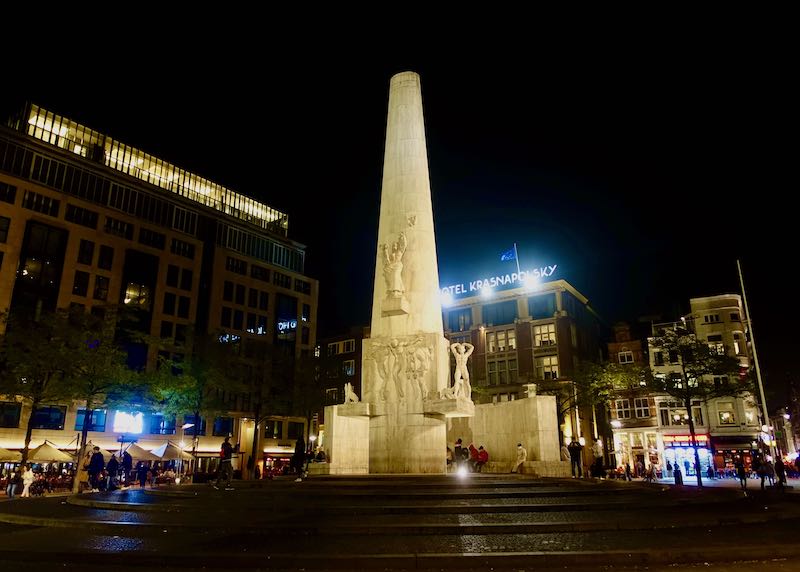
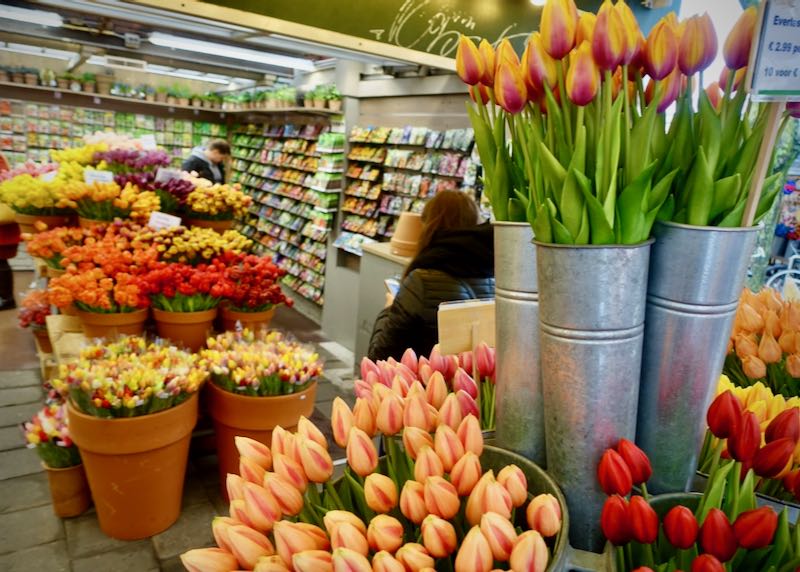
About Santorini Dave